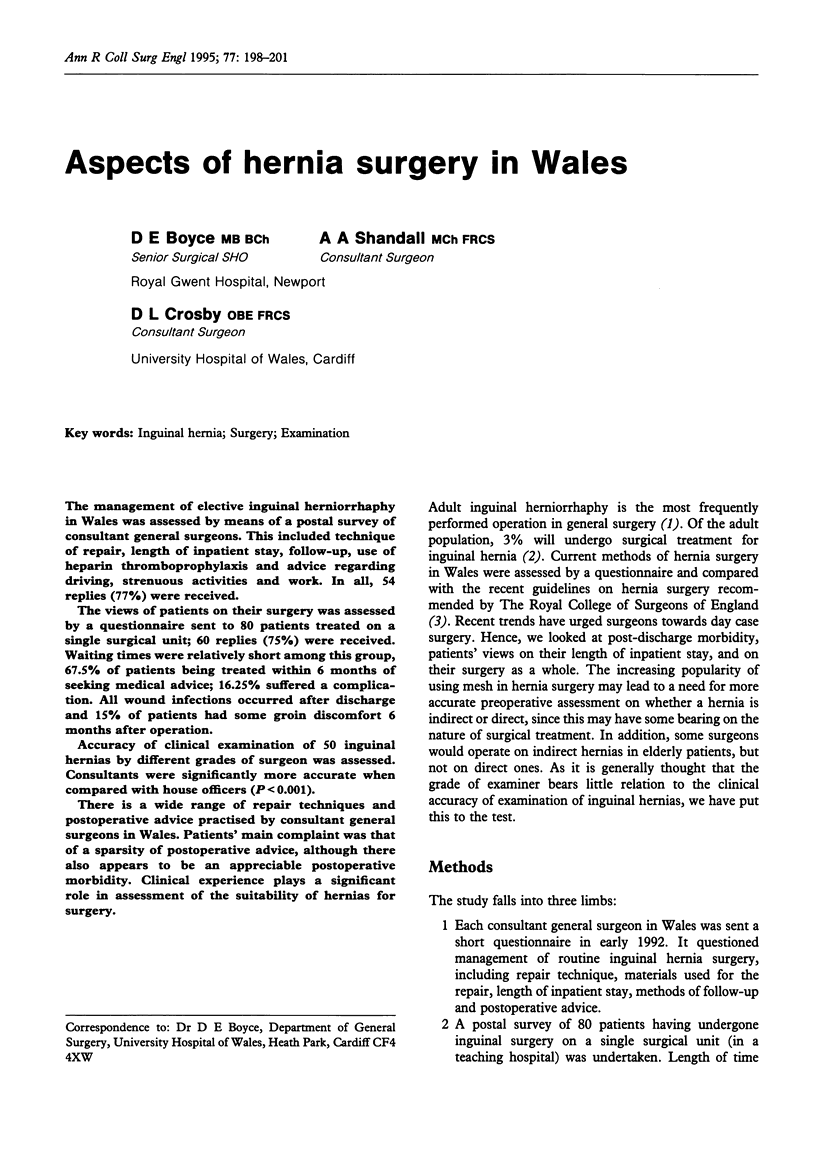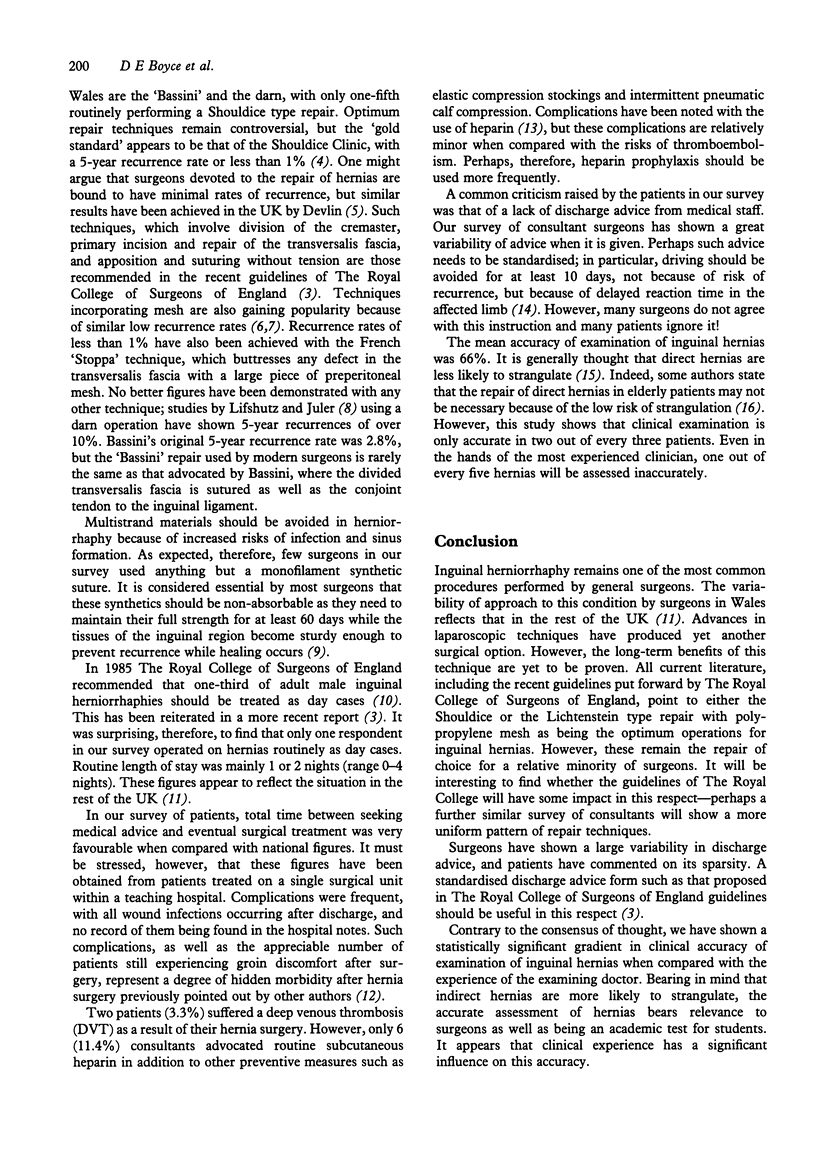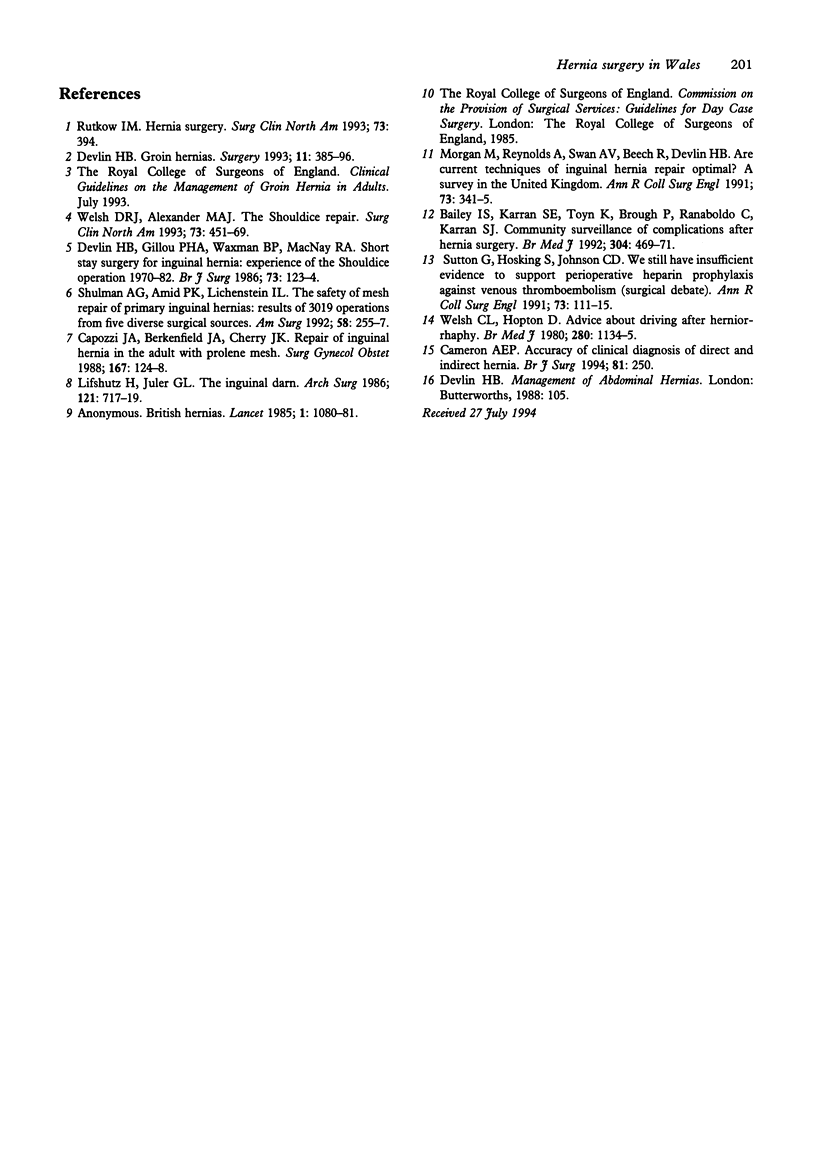Abstract
The management of elective inguinal herniorrhaphy in Wales was assessed by means of a postal survey of consultant general surgeons. This included technique of repair, length of inpatient stay, follow-up, use of heparin thromboprophylaxis and advice regarding driving, strenuous activities and work. In all, 54 replies (77%) were received. The views of patients on their surgery was assessed by a questionnaire sent to 80 patients treated on a single surgical unit; 60 replies (75%) were received. Waiting times were relatively short among this group, 67.5% of patients being treated within 6 months of seeking medical advice; 16.25% suffered a complication. All wound infections occurred after discharge and 15% of patients had some groin discomfort 6 months after operation. Accuracy of clinical examination of 50 inguinal hernias by different grades of surgeon was assessed. Consultants were significantly more accurate when compared with house officers (P < 0.001). There is a wide range of repair techniques and postoperative advice practised by consultant general surgeons in Wales. Patients' main complaint was that of a sparsity of postoperative advice, although there also appears to be an appreciable postoperative morbidity. Clinical experience plays a significant role in assessment of the suitability of hernias for surgery.
Full text
PDF



Selected References
These references are in PubMed. This may not be the complete list of references from this article.
- Bailey I. S., Karran S. E., Toyn K., Brough P., Ranaboldo C., Karran S. J. Community surveillance of complications after hernia surgery. BMJ. 1992 Feb 22;304(6825):469–471. doi: 10.1136/bmj.304.6825.469. [DOI] [PMC free article] [PubMed] [Google Scholar]
- Cameron A. E. Accuracy of clinical diagnosis of direct and indirect inguinal hernia. Br J Surg. 1994 Feb;81(2):250–250. doi: 10.1002/bjs.1800810231. [DOI] [PubMed] [Google Scholar]
- Capozzi J. A., Berkenfield J. A., Cherry J. K. Repair of inguinal hernia in the adult with Prolene mesh. Surg Gynecol Obstet. 1988 Aug;167(2):124–128. [PubMed] [Google Scholar]
- Devlin H. B., Gillen P. H., Waxman B. P., MacNay R. A. Short stay surgery for inguinal hernia: experience of the Shouldice operation, 1970-1982. Br J Surg. 1986 Feb;73(2):123–124. doi: 10.1002/bjs.1800730217. [DOI] [PubMed] [Google Scholar]
- Lifschutz H., Juler G. L. The inguinal darn. Arch Surg. 1986 Jun;121(6):717–719. doi: 10.1001/archsurg.1986.01400060113016. [DOI] [PubMed] [Google Scholar]
- Morgan M., Reynolds A., Swan A. V., Beech R., Devlin H. B. Are current techniques of inguinal hernia repair optimal? A survey in the United Kingdom. Ann R Coll Surg Engl. 1991 Nov;73(6):341–345. [PMC free article] [PubMed] [Google Scholar]
- Shulman A. G., Amid P. K., Lichtenstein I. L. The safety of mesh repair for primary inguinal hernias: results of 3,019 operations from five diverse surgical sources. Am Surg. 1992 Apr;58(4):255–257. [PubMed] [Google Scholar]
- Sutton G., Hosking S., Johnson C. D. Surgical debate. We still have insufficient evidence to support perioperative heparin prophylaxis against venous thromboembolism. Ann R Coll Surg Engl. 1991 Mar;73(2):111–115. [PMC free article] [PubMed] [Google Scholar]
- Welsh C. L., Hopton D. Advice about driving after herniorrhaphy. Br Med J. 1980 May 3;280(6223):1134–1135. doi: 10.1136/bmj.280.6223.1134. [DOI] [PMC free article] [PubMed] [Google Scholar]
- Welsh D. R., Alexander M. A. The Shouldice repair. Surg Clin North Am. 1993 Jun;73(3):451–469. doi: 10.1016/s0039-6109(16)46030-5. [DOI] [PubMed] [Google Scholar]


